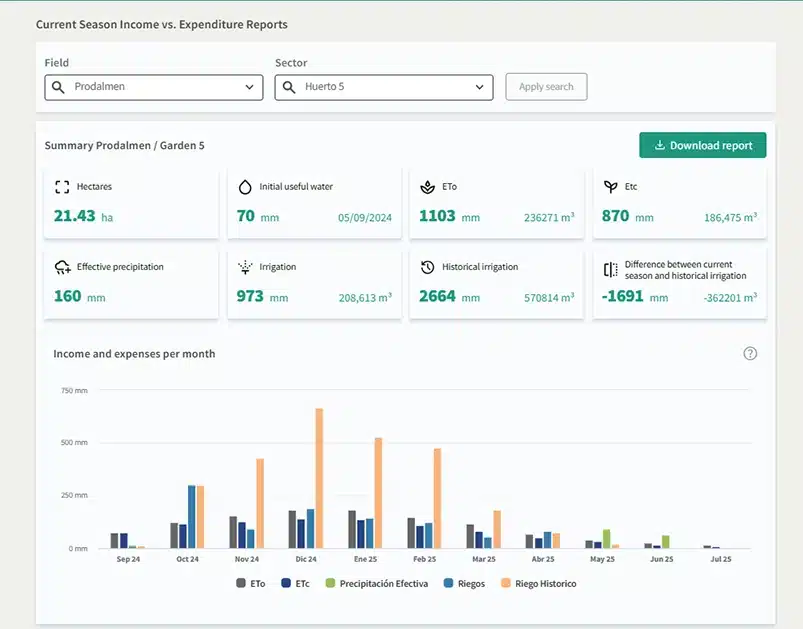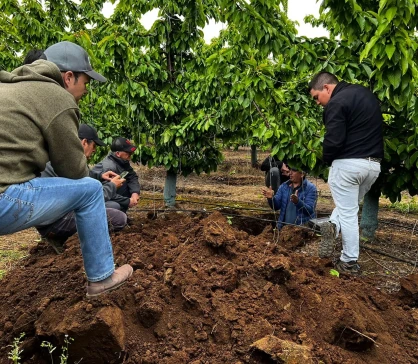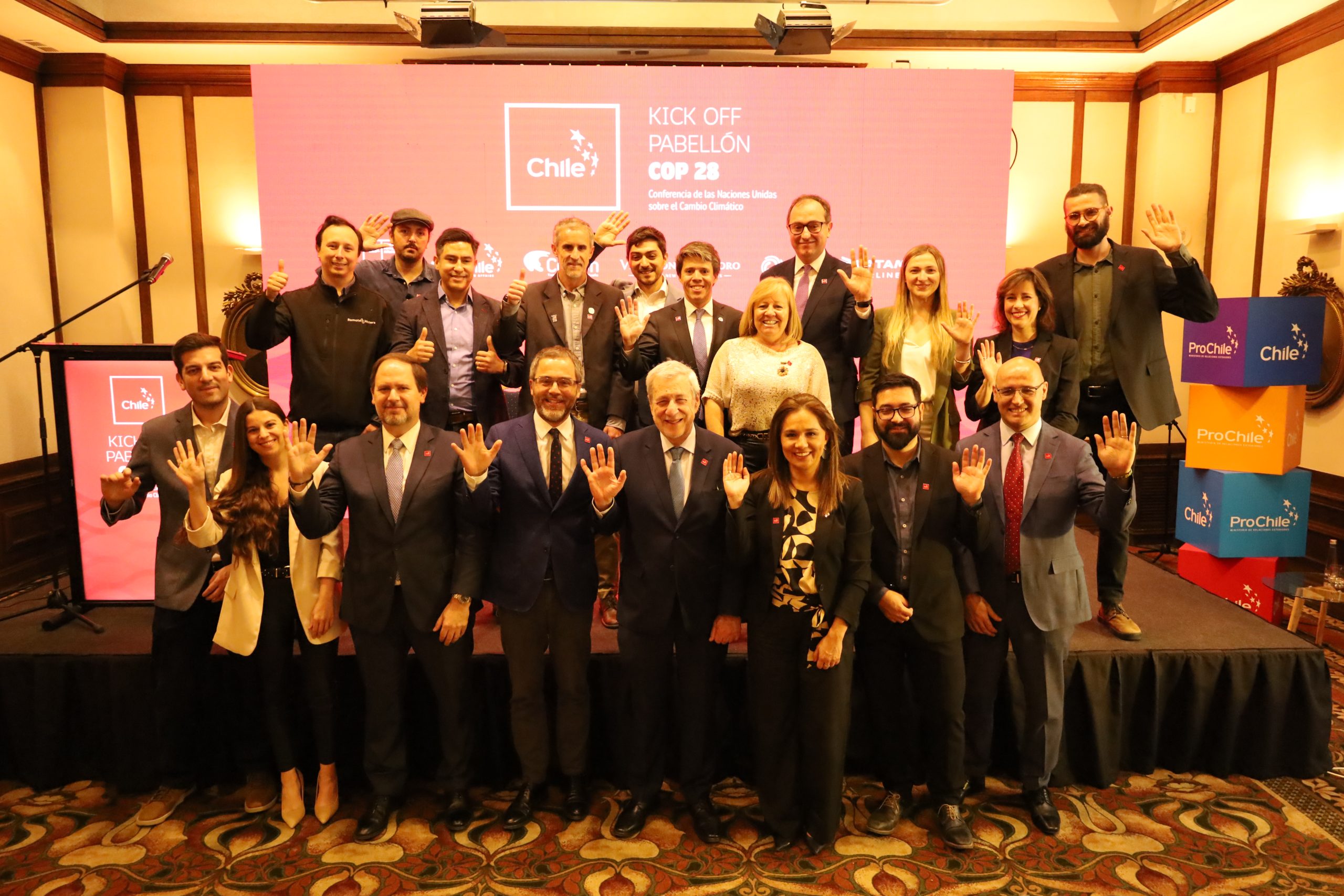Overview: Water Efficiency as a Corporate Priority
In water-stressed agricultural regions, such as Maipo, Chile, or California, USA, the stakes for water efficiency have never been higher. For global leaders like Coca-Cola, achieving sustainability goals requires an understanding and action across their entire agricultural supply chain. In this case study, we examine how Kilimo collaborated with companies and key almond producers in Maipo, Chile, to demonstrate that technology and innovation can be powerful allies in combating the water crisis.
Resembling the environmental and operational conditions of California’s Central Valley, Maipo conditions provide a close approach to understanding opportunities. Maipo provided the perfect landscape to demonstrate how smart irrigation tools can drive water stewardship and help farmers do more with less.
Challenge: From Measuring Water Applied to Understanding Water Needed
In Maipo, the reality for almond growers was already being tracked through logging water use via irrigation controllers and spreadsheets. They knew how much they applied, but there is still an opportunity to improve their ability to use and understand the data, to determine how much the crop needed. Without that insight, it was difficult to quantify over- or under-irrigation, let alone optimize practices for sustainability goals.
Kilimo filled that gap by a prior study conducted to assess the heterogeneity of irrigation sectors. Together with the beneficiary, we determine whether this heterogeneity is due to factors other than soil, such as the presence of pests or diseases. Based on this, we define representative sampling points within the sector to carry out a textural soil analysis, which allows us to model water movement in the soil. layering water balance modeling, local climate data, and satellite imagery to show, in real-time, the difference between crop demand and actual irrigation. In addition, historical comparisons, for us, three years of historical information enable us to build a baseline and add another layer of context. Differences between seasons may be attributed to climate change conditions. For example, higher irrigation levels in 2024 compared to 2022 can be explained by increased water availability, which now allows meeting the crop’s water demand—something that was not possible before due to water scarcity. This helps the grower identify patterns, inefficiencies, and opportunities for improvement.
“We helped them take a question—how much water are we using?—and turn it into action. They were ready to shift; we gave them the tools and confidence to do so,” says Pía González, Agronomy Success from the Kilimo team.
Method: Turning Curiosity into Action
Kilimo’s deployment followed a proven model that could be easily replicated across similar geographies like California:
- Precision Crop Water Modeling
2. Farmer-Centered Support
3. Platform Accessibility
4. Tool Integration
5. Landscape understanding
Obstacles: Technology Adoption and Interpretation
As with many digital transitions, the initial barriers involved changing habits, especially around:
– Consistent data input and logging.
– Trusting new insights, particularly when they differed from familiar tools.
– Integrating Kilimo with other technologies in use by field operators and agronomists.
– Improve efficiency in other operations—for example, by reducing the number of soil pits (calicatas) needed in the field.
Kilimo helps them address these challenges through ongoing training, onboarding, and interpretive support, ensuring users can understand the “why” behind every data point.
Results: Real Change, Not Just Monitoring
In Maipo, the grower began to fundamentally rethink their irrigation strategy. Before Kilimo, they lacked clarity on their actual water use. With Kilimo, they not only understood it—they optimized it.
Graph 1: Irrigation evolution with Kilimo made it possible to decrease to ⅓ of the previous irrigation volume, without affecting production.
- Greater Water Awareness
- Behavioral Change
- Sustainability Readiness
- A growing interest in exploring new data relationships, such as the amount of water required to produce almonds.
“In one sentence: We supported a mindset shift in irrigation, turning curiosity into action and filling the gaps left by traditional tools” says Pía González, Agronomy Success from the Kilimo team.
Why This Matters to California
What worked in Maipo is highly relevant for California. Both regions share:
- Mediterranean climates with long dry seasons and a high probability of having similar climate impacts.
- Similar crops (notably almonds and grapes).
- Water stress levels pressure to demonstrate responsible use.
- Corporate partnerships driving sustainable sourcing.
“The challenges farmers face in Maipo are nearly identical to those in California’s Central Valley. That’s why this approach is not only scalable—it’s urgently needed,” notes Pia Gonzalez, Agronomy Success from the Kilimo team.
If your company is looking for ways to improve water efficiency and meet its sustainability goals, reach out to us—we’d love to explore how we can help you become a water-positive actor



